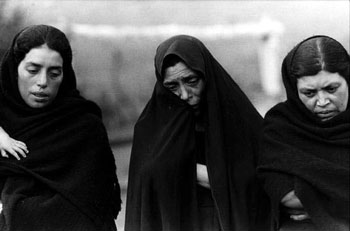In the vibrant world of flamenco, where passion and emotion converge into a unique explosion of artistic expression, there exist enigmatic and moving figures that have left a profound mark on the tradition, one of them being that of the “mourners” or “plañideras.” These passionate and melancholic women who wept and lamented at funerals were one of the hidden and most mysterious treasures of flamenco.
In this blog, we will delve into the connection between the mourners and flamenco, taking an authentic journey through passion, mourning, and music.

In the 19th century, it was a custom to hire women to attend funerals and express grief through weeping, lamentation, and singing. Many of these women were Gypsies, and they played a significant role in funeral ceremonies, with their voices considered powerful for evoking emotions and expressing the pain of loss.
From the “Playera” to the “Seguiriya”
The origin of this singing style dates back to the early 19th century, probably emerging from the chants of mourners. It is also known as “Seguidillas playeras,” possibly derived from the term “plañidera.” The name “seguiriya” has its origins in the linguistic transformation from “seguidilla” to “seguirilla,” a genre considered the essence of “cante jondo” or deep song.
The mystery surrounding the origin of seguiriya in the world of flamenco has been a subject of debate and study. According to García Matos, these profound flamenco songs may have a possible precursor in the Castilian “seguidilla.” He points to an opera from 1820 titled “La máscara afortunada” as an interesting reference point. In this opera, there is a number titled “Las Playeras” that has the same metric structure used for singing seguiriya in flamenco. The similarity to the “endecha,” which was sung by mourners in times of mourning, leads to the hypothesis that the early seguiriya songs were inspired by themes of death and conceived as songs of mourning.
It’s important to highlight that many of the “endecheras” were Gypsies, and this ethnic connection contributed to the emergence of the so-called “seguirillas gitanas” or Gypsy seguiriya. Antonio Machado y Álvarez, known as Demófilo, mentions the existence of Gypsy seguiriya, which was considered both “playera” and “seguiriya” during certain periods. This suggests the interconnection between these styles within the world of flamenco.
Seguiriya holds a special place in the flamenco tradition, considered a fundamental style and a complex genre. Alongside “soleá,” it acts as a catalyst for many of the elements that make up the overall aesthetic of flamenco. Some scholars see “playera” as an intermediate link between “toná” and “seguiriya,” as certain elements of “tonás” have given rise to later genres, including seguiriya.
Had you ever imagined this connection before?


